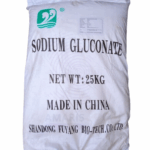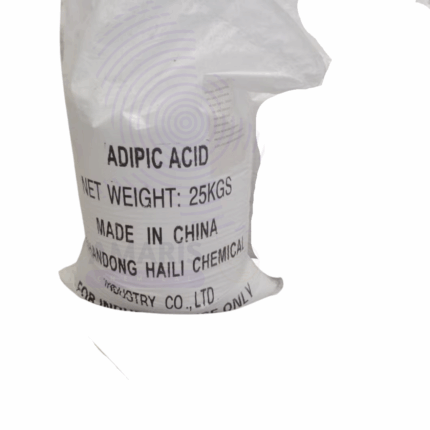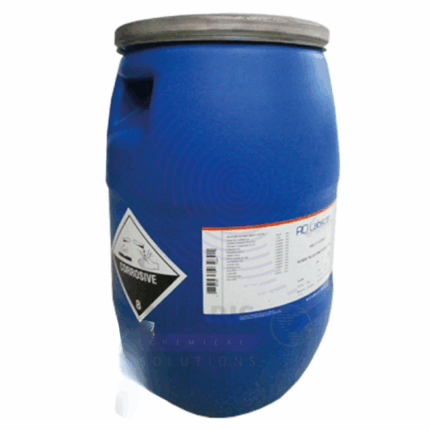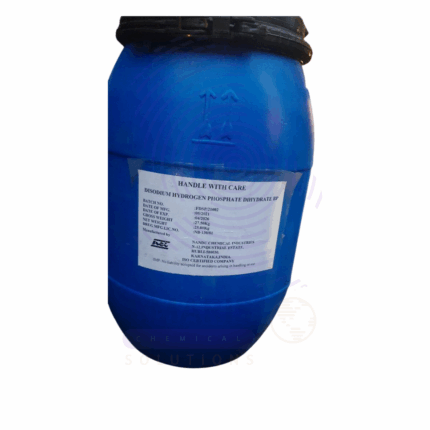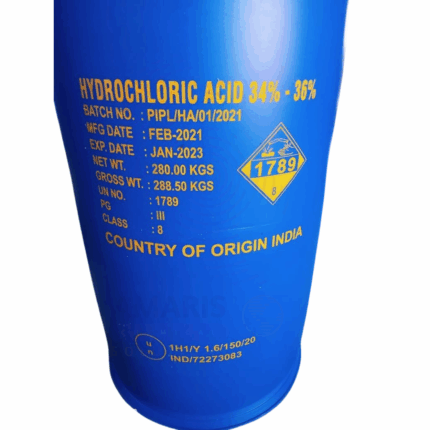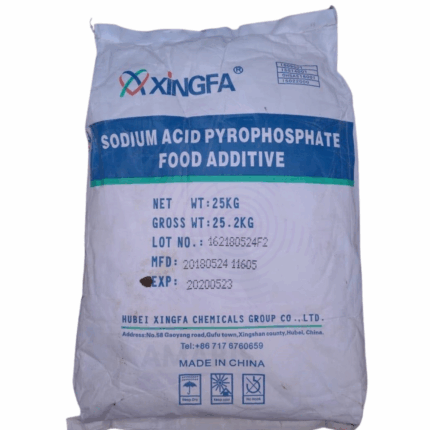Back to products
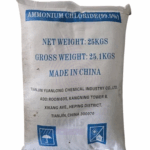

Ammonium Chloride
$ 1.64 Original price was: $ 1.64.$ 1.55Current price is: $ 1.55.
Ammonium Bicarbonate
$ 1.56 Original price was: $ 1.56.$ 1.45Current price is: $ 1.45.
Whatsapp Order
Ammonium bicarbonate is a white crystalline powder or granules with a slightly alkaline taste and a characteristic ammoniacal odor. It is a white solid that decomposes readily on heating, releasing ammonia, carbon dioxide, and water vapor. It is widely used in the food industry as a leavening agent, in chemical synthesis, and in various industrial applications. Its unique property of decomposing to release gases makes it valuable for baking and other processes where gas release is desired.
Description
Table of Contents
Toggle
Ammonium Bicarbonate
Primary Uses
- Food Industry – Leavening Agent
- Commonly used as a leavening agent in baked goods such as cookies, crackers, and flatbreads where it helps produce a light, porous texture by releasing CO₂ gas upon heating.
- Preferred in recipes that require a quick release of gas without leaving residue, especially in traditional and artisanal baking.
- Used in some bakery products as an alternative to baking powder or baking soda.
- Approved as a food additive (E503ii) in many countries.
- Chemical Industry – Reagent & Intermediate
- Utilized as a mild alkaline reagent in chemical synthesis and analytical chemistry.
- Acts as a source of ammonia and carbon dioxide in chemical reactions.
- Employed in the production of pharmaceuticals, fertilizers, and dyes.
- Pharmaceuticals
- Used as a component in some effervescent powders and preparations, where the gas release aids dissolution and absorption.
- May act as a mild antacid in certain formulations.
Secondary Uses
- Agriculture
- Occasionally used as a nitrogen fertilizer or soil amendment, providing ammonium ions and helping adjust soil pH.
- Less commonly applied compared to ammonium sulfate or nitrate.
- Fire Extinguishing
- Used in some dry chemical fire extinguishers as a chemical that decomposes to release non-flammable gases.
- Laboratory Uses
- Employed in analytical chemistry as a buffering agent or source of ammonium ions.
- Used in preparing volatile buffers for mass spectrometry and chromatography.
- Miscellaneous Uses
- Used in leather tanning processes.
- Applied in the production of some ceramics and glass as a foaming agent.
KEY PRODUCT FEATURES
1. Basic Identification Attributes
- Chemical Name (IUPAC): Ammonium bicarbonate
- Common/Trade Names: Ammonium bicarbonate, ammonium hydrogen carbonate
- CAS Number: 1066-33-7
- HS Code: 2836.20.00
- Molecular Formula: NH4HCO3
- Synonyms: Ammonium hydrogen carbonate, ammonium acid carbonate
2. Physical & Chemical Properties
- Physical State: White crystalline powder or granules
- Color & Odor: White, odor of ammonia when decomposing
- Melting Point: Decomposes at ~36–60°C (not a true melting point)
- Boiling Point: Decomposes before boiling
- Density: ~1.6 g/cm³
- Solubility: Highly soluble in water (~3.7 g/mL at 20°C), decomposes in hot water
- pH Level: Slightly alkaline (~8–9 in aqueous solution)
- Vapor Pressure: Low, but releases ammonia and CO₂ upon decomposition
- Flash Point: Non-flammable
- Stability: Unstable when heated or in moist environments
3. Safety & Hazard Attributes
- Hazard Class (GHS): Generally low hazard, but ammonia release can cause irritation
- NFPA Ratings: Health 2 (moderate hazard), Flammability 0, Reactivity 1 (unstable)
- Exposure Limits: No specific OSHA PEL, ammonia vapors exposure limits apply
- Reactivity: Decomposes readily on heating or in moist air
- Incompatible Materials: Strong acids, strong bases, oxidizing agents, moisture
4. Storage & Handling Attributes
- Storage Conditions: Store in a cool, dry place in airtight containers to prevent decomposition
- Container Type: Plastic or glass containers, tightly sealed
- Shelf Life: Typically 1–2 years if stored properly in dry conditions
- Special Handling: Avoid moisture and heat; handle in well-ventilated areas to avoid ammonia vapor buildup
5. Regulatory & Compliance Attributes
- Regulatory Status: Approved food additive (E503ii) in many regions
- Transportation: Not classified as hazardous but requires careful packaging to avoid moisture exposure
- Waste Disposal: Dispose according to local regulations; non-hazardous but avoid environmental contamination
6. Environmental & Health Impact
- Ecotoxicity: Low aquatic toxicity, but ammonia release can be harmful in large quantities
- Persistence: Decomposes readily in the environment
- Carcinogenicity: Not classified as carcinogenic
- Biodegradability: Biodegradable and breaks down into natural components
SAFETY HANDLING PRECAUTIONS
Safety Handling Precautions
- PPE: Wear gloves, safety goggles, and dust masks when handling the powder.
- Handling: Avoid inhalation of dust and ammonia vapors. Work in well-ventilated areas.
- Storage: Keep containers sealed and dry to prevent decomposition and ammonia release.
- Hygiene: Wash hands after use; avoid eating, drinking, or smoking during handling.
First Aid Measures
- Inhalation: Move affected person to fresh air immediately. If ammonia vapors cause irritation or breathing difficulty, seek medical attention.
- Skin Contact: Wash skin with soap and water. Seek medical advice if irritation develops.
- Eye Contact: Rinse eyes with plenty of water for at least 15 minutes. Seek medical care if irritation persists.
- Ingestion: Rinse mouth and drink plenty of water. Seek medical attention if large amounts are ingested.
Firefighting Measures
- Fire Hazards: Non-flammable but decomposes on heating releasing ammonia and carbon dioxide gases, which can be irritating.
- Extinguishing Media: Use water spray, dry chemical, foam, or CO₂ for surrounding fires.
- Special Precautions: Firefighters should use self-contained breathing apparatus (SCBA) due to ammonia vapors.
Related products
Adipic Acid
$ 3.20
Disodium Hydrogen Phosphate
Disodium Hydrogen Phosphate, also known as sodium phosphate dibasic, is an inorganic salt widely used as a buffering agent, emulsifier, and food additive. It appears as a white, odorless crystalline powder or granules that are highly soluble in water and alkaline in nature. It plays a crucial role in maintaining pH balance, stabilizing formulations, and supplying essential sodium and phosphate ions in various industries including food, pharmaceuticals, water treatment, and agriculture.
Disodium Hydrogen Phosphate Dihydrate
Disodium Hydrogen Phosphate Dihydrate is the hydrated form of disodium hydrogen phosphate, a white crystalline powder commonly used as a buffering agent, emulsifier, and sequestrant. The dihydrate form contains two water molecules per formula unit, which affects its physical properties such as melting point and solubility. It is widely applied in food, pharmaceutical, water treatment, and industrial processes to maintain pH stability, improve texture, and supply essential sodium and phosphate ions.
Hydrochloric Acid
Hydrochloric Acid HCL is a highly corrosive, strong mineral acid consisting of hydrogen chloride gas dissolved in water to a concentration of approximately 33% by weight. It appears as a clear, colorless to slightly yellow liquid with a sharp, pungent odor. HCl 33% is widely used in industrial, chemical, and laboratory applications due to its strong acidic properties, high reactivity, and versatility. It plays a crucial role in pH control, metal processing, chemical synthesis, and cleaning processes across numerous sectors.
Illipe Butter
Illipe Butter is a natural, hard vegetable fat derived from the nuts of the Shorea stenoptera tree, native to the rainforests of Borneo. Known for its high melting point and rich moisturizing profile, Illipe Butter is prized in cosmetic, pharmaceutical, and food applications for its emollient qualities and stability. It closely resembles cocoa butter in composition and function, making it a sustainable alternative in formulations requiring consistency and long shelf life. The butter appears as a pale yellow to off-white solid with a mild, neutral aroma.
Methyl Cellulose 400mpc
Methyl Cellulose 400mpc is a chemically modified cellulose derivative in powder form. It is a non-ionic, water-soluble polymer widely used as a thickener, binder, emulsifier, and film former. It exhibits excellent water retention, viscosity control, and thermal gelation properties, making it ideal for applications in construction, pharmaceuticals, food, and cosmetics.
Sodium Acid Pyrophosphate
Sodium Acid Pyrophosphate (SAPP) is an inorganic compound with the chemical formula Na₂H₂P₂O₇. It is a white, crystalline powder or granular solid that serves as a versatile leavening agent, buffering agent, and sequestrant. SAPP is widely used in food processing, water treatment, and industrial applications due to its ability to control pH, chelate metals, and modify texture.
Sodium Bisulphate Monohydrate
Sodium Bisulphate Monohydrate, also known as sodium hydrogen sulphate, is a white crystalline powder or granular solid commonly used as an acidic cleaning agent, pH adjuster, and bleaching accelerator. It is a dry acid that releases sulfur dioxide when dissolved in water, making it effective in various industrial, food, and water treatment applications. This compound is valued for its ability to lower pH safely and is widely used where a controlled acidification is required without handling hazardous liquid acids.


 Preservatives(food)
Preservatives(food) Flavor Enhancers
Flavor Enhancers Acidulants
Acidulants Sweeteners
Sweeteners Antioxidants
Antioxidants Colorants(food)
Colorants(food) Nutraceutical Ingredients (food)
Nutraceutical Ingredients (food) Nutrient Supplements
Nutrient Supplements Emulsifiers
Emulsifiers
 Collectors
Collectors Dust Suppressants
Dust Suppressants Explosives and Blasting Agents
Explosives and Blasting Agents Flocculants and Coagulants
Flocculants and Coagulants Frothers
Frothers Leaching Agents
Leaching Agents pH Modifiers
pH Modifiers Precious Metal Extraction Agents
Precious Metal Extraction Agents
 Antioxidants(plastic)
Antioxidants(plastic) Colorants (Pigments, Dyes)
Colorants (Pigments, Dyes) Fillers and Reinforcements
Fillers and Reinforcements Flame Retardants
Flame Retardants Monomers
Monomers Plasticizers
Plasticizers Polymerization Initiators
Polymerization Initiators Stabilizers (UV, Heat)
Stabilizers (UV, Heat)
 Antifoaming Agents
Antifoaming Agents Chelating Agents
Chelating Agents Coagulants and Flocculants
Coagulants and Flocculants Corrosion Inhibitors
Corrosion Inhibitors Disinfectants and Biocides
Disinfectants and Biocides Oxidizing Agents
Oxidizing Agents pH Adjusters
pH Adjusters Scale Inhibitors( water)
Scale Inhibitors( water)
 Antioxidants(cosmetic)
Antioxidants(cosmetic) Emollients
Emollients Fragrances and Essential Oils
Fragrances and Essential Oils Humectants
Humectants Preservatives
Preservatives Surfactants(cosmetic)
Surfactants(cosmetic) Thickeners
Thickeners UV Filters
UV Filters
 Fertilizers
Fertilizers Soil Conditioners
Soil Conditioners Plant Growth Regulators
Plant Growth Regulators Animal Feed Additives
Animal Feed Additives Biostimulants
Biostimulants Pesticides (Herbicides, Insecticides, Fungicides)
Pesticides (Herbicides, Insecticides, Fungicides)
 Active Pharmaceutical Ingredients (APIs)
Active Pharmaceutical Ingredients (APIs) Excipients
Excipients Solvents(pharmaceutical)
Solvents(pharmaceutical) Antibiotics
Antibiotics Antiseptics and Disinfectants
Antiseptics and Disinfectants Vaccine Adjuvants
Vaccine Adjuvants Nutraceutical Ingredients (pharmaceutical)
Nutraceutical Ingredients (pharmaceutical) Analgesics & Antipyretics
Analgesics & Antipyretics
 Analytical Reagents
Analytical Reagents Solvents(lab)
Solvents(lab) Chromatography Chemicals
Chromatography Chemicals Spectroscopy Reagents
Spectroscopy Reagents microbiology-and-cell-culture-reagents
microbiology-and-cell-culture-reagents Molecular Biology Reagents
Molecular Biology Reagents Biochemical Reagents
Biochemical Reagents Inorganic and Organic Standards
Inorganic and Organic Standards Laboratory Safety Chemicals
Laboratory Safety Chemicals Specialty Laboratory Chemicals(Special Laboratory Equipment)
Specialty Laboratory Chemicals(Special Laboratory Equipment)
 Demulsifiers
Demulsifiers Hydraulic Fracturing Fluids
Hydraulic Fracturing Fluids Scale Inhibitors(oil)
Scale Inhibitors(oil) Surfactants(oil)
Surfactants(oil) Drilling Fluids
Drilling Fluids
 Dyes and Pigments
Dyes and Pigments Bleaching Agents
Bleaching Agents Softening Agents
Softening Agents Finishing Agents
Finishing Agents Antistatic Agents
Antistatic Agents
 Admixtures
Admixtures Waterproofing Agents
Waterproofing Agents Sealants and Adhesives
Sealants and Adhesives Curing Compounds
Curing Compounds Concrete Repair Chemicals
Concrete Repair Chemicals Anti-Corrosion Coatings
Anti-Corrosion Coatings
 Surfactants(cleaning)
Surfactants(cleaning) Builders
Builders Enzymes
Enzymes Solvents (Cleaning)
Solvents (Cleaning) Fragrances
Fragrances
 Electronic Chemicals
Electronic Chemicals Catalysts
Catalysts Lubricants
Lubricants Photographic Chemicals
Photographic Chemicals Refrigerants
Refrigerants Automotive chemicals
Automotive chemicals Pyrotechnic Chemicals
Pyrotechnic Chemicals
 Biodegradable Surfactants
Biodegradable Surfactants Bio-based Solvents
Bio-based Solvents Renewable Polymers
Renewable Polymers Carbon Capture Chemicals
Carbon Capture Chemicals Wastewater Treatment Chemicals
Wastewater Treatment Chemicals
 Pigments
Pigments Solvents(paint)
Solvents(paint) Specialty Coatings
Specialty Coatings Binders/Resins
Binders/Resins Additives
Additives Driers
Driers Anti-Corrosion Agents
Anti-Corrosion Agents Functional Coatings
Functional Coatings Application-Specific Coatings
Application-Specific Coatings
 Fresh Herbs
Fresh Herbs Ground Spices
Ground Spices Whole Spices
Whole Spices Spice Blends
Spice Blends Dried Herbs
Dried Herbs
 Leavening Agents
Leavening Agents Dough Conditioners
Dough Conditioners Flour Treatments
Flour Treatments Fat Replacers
Fat Replacers Decoratives
Decoratives Preservatives(baking)
Preservatives(baking)
 Plasticizers & Softeners
Plasticizers & Softeners Reinforcing Agents
Reinforcing Agents Adhesion Promoters
Adhesion Promoters Vulcanizing Agents
Vulcanizing Agents Antidegradants
Antidegradants Blowing Agents
Blowing Agents Fillers & Extenders
Fillers & Extenders Accelerators & Retarders
Accelerators & Retarders
